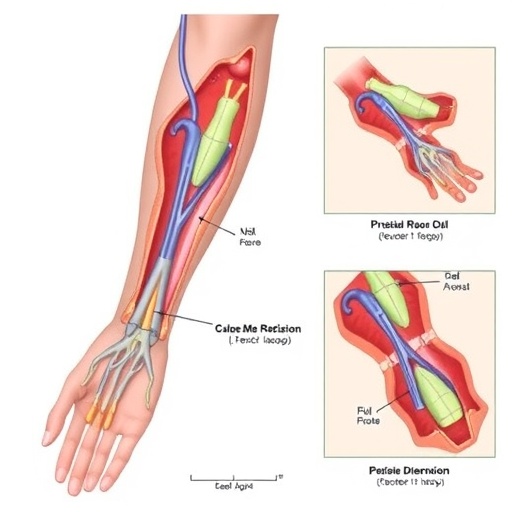Madrid, Spain: Researchers discovered an easily measured gene linked to a high fatality rate, which could be used as a novel prognostic biomarker in patients with a Pseudomonas aeruginosa (P. aeruginosa) bloodstream infection, according to research presented at the 28th European Congress of Clinical Microbiology and Infectious Diseases (ECCMID) [1].
The new findings, presented by Prof. Matthias Willmann of Institut für Medizinische Mikrobiologie und Hygiene at the University of Tübingen in Germany, identified such biomarkers by studying genetic characteristics and gene expression data of P. aeruginosa strains from patients with a bloodstream infection.
"We identified a novel and clinically relevant virulence marker candidate in P. aeruginosa. The helP genotype is suitable for usage in clinical routine due to its adequate predictive power and ease of measurement."
There is limited understanding of pathogen virulence factors, the factors that determine the severity of the disease-causing germs, that could be useful in determining patient outcomes and possible treatment targets. Willmann explained that until today, biomarker research, regardless of the type of biomarker (diagnostic vs prognostic), has primarily focused on patient-derived biomarkers but neglected pathogen-derived biomarkers.
"This might have been a huge mistake. Bacteria like Pseudomonas aeruginosa can have a large genome with several thousands of genes. Strains from the same species might even differ by hundreds of them," Willmann said. "It is very likely that these genomic differences contribute to a different degree of bacterial pathogenicity and thus to a different clinical outcome."
The team used whole-genome sequencing, a process allowing to determine the entire DNA of an organism, from the first blood culture of every patient and so-called quantitative proteomics, which is used to determine the amount of proteins in the samples. The researchers used a multi-level Cox regression analysis to determine how long it would take for certain events to happen. This gave the researchers an understanding of the mortality rate based on characteristics of each patient and P. aeruginosa.
Willmann's team analysed 2,298 accessory genes as well as 1,078 core protein levels and 107 variations in severity and antibiotic effectiveness factors. They were able to identify several clusters, one of which was linked with higher risk of patient fatalities. Looking closer at this cluster, one particular gene, a DEAD-box RNA helicase the team named helP, had a hazard ratio of 2.01, which meant a fatal outcome was twice as likely compared with the control group.
"In case of a high risk, which would be indicated by the presence or high abundance of a biomarker, physicians can react early," Willmann explained, adding that "this could be by increasing the patient monitoring (by transfer to ICU units) or by administering antibiotic combination treatment instead of a mono-therapy."
Because of the helP gene's location, it was determined that helP was also transferable to other strains and even species, which could lead to other bacteria becoming more virulent.
"In the same way that we do not want multidrug resistance to be spread, it must be an aim to reduce the spread of very pathogenic strains," Willman said. "This is particularly the case if the virulence factor that mediates the increased pathogenicity is located on a mobile genetic element and could thus be transferred to a less pathogenic bacterium, which could then acquire a higher pathogenicity. From this point of view, our results are also of importance for infection control."
###
Abstract no: O0322, The DEAD-box RNA helicase helP as prognostic biomarker in patients with Pseudomonas aeruginosa bloodstream infection: a multi-omics approach; session Diagnosing sepsis: molecular matters vs clinical scores, 09:00 – 11:00, Sunday, 22 April 2018, Hall F
[1] The European Congress of Clinical Microbiology and Infectious Diseases (ECCMID) is the annual meeting of the European Society of Clinical Microbiology and Infectious Diseases (ESCMID). This year it will take place from 21 – 24 April 2018 in Madrid, Spain. At the world's largest congress combining the fields of infectious diseases and clinical microbiology, researchers will present more than 3,000 regular and late-breaking abstracts with the latest findings and recommendations, which are set to help improve diagnosis, prevention and treatment of infection-related diseases. The congress offers almost 200 sessions, including keynote lectures, symposia, oral sessions, educational workshops and meet-the-expert session. ECCMID expects approximately 13,000 participants from more than 100 countries.
About ESCMID
The European Society of Clinical Microbiology and Infectious Diseases (ESCMID) is a non-profit organization dedicated to improving the diagnosis, treatment and prevention of infectious diseases in Europe and beyond. The society promotes and supports research, education, training and good medical practice in infection-related disciplines with a special focus on antimicrobial resistance to build capacity throughout the world. http://www.escmid.org
Contact
Chantal Britt
ESCMID Communications Manager
ESCMID Executive Office
P.O. Box 214, CH-4010 Basel
Phone +41-61-508-01-57
Mobile +41-76-588-08-24
Email [email protected]
http://www.escmid.org
Tara Giroud
ECCMID Communications Assistant
Mobile +41-78-705-79-85
Email [email protected]
Media Contact
Chantal Britt
[email protected]
41-765-880-824
http://www.escmid.org/




